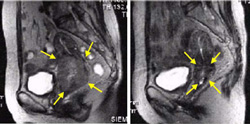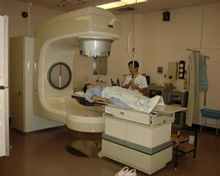Background of the Activities and the Present Targets
| 1. |
Protocol study on standardized radiation therapy for uterine cervical cancer had been carried out since 1994. The object of this joint clinical study is to contribute to the improvement of the radiation treatment techniques in eight Asian participant countries in accordance with the standard protocol.
This standard protocol was established as the Standardized Radiotherapy Protocol for Treatment of Uterine Cervix Cancer(CERVIX-1) and its guidebook Radiation Therapy of Stage IIIB Cervical Cancer for Asians: Report and Guideline from the Cooperative Trials was published in September 2001. This guidebook is now actively used for dissemination in FNCA countries. It has been utilized in training courses of the International Atomic Energy Agency (IAEA) to increase synergy of activities of FNCA and IAEA. |
| |
|
| 2. |
At FNCA 2002 Workshop held in December 2002 at National Institute of Radiological Sciences (NIRS), Japan, it was recommended to start two new cooperative studies from the year 2003. One is chemoradiotherapy (CRT) for uterine cervical cancer and the other is CRT for nasopharyngeal cancer. To elaborate more effective treatment method in FNCA countries, new cooperative studies started. |
| |
|
| 3. |
At FNCA 2002 Workshop, the importance of quality assurance and quality control (QA/QC) of radiation dosimetry and treatment planning for brachytherapy was noted and joint effort to make a guidebook on the QA/QC was suggested. |
Activities for the Year 2002/2003
| 1. |
The results of radiation therapy in registered patients were satisfactory in terms of five year survival rate and local control rate of 52.5% and 81.6%, respectively. With this excellent achievement, effectiveness of the joint clinical study was confirmed. Based upon this viewpoint, the following challenges were carried out: |
| |
|
| |
| 1) |
Effort to bring preciseness of patient treatment data, like the five year survival rate and control rate, by adequate follow-up actions. |
| 2) |
A trial by the accelerated hyperfractionation radiotherapy had been implemented to make the full-scale clinical trial among the FNCA countries since January 2000, in order to further improve the treatment results for uterine cervix cancer, and 103 clinical cases have been registered. This trial is expected to increase treatment effect as well as to decrease damage to the surrounding normal tissues. |
|
| |
|
| 2. |
Through the FNCA cooperation activities, usefulness of a joint study among participating experts was proven in raising medical treatment level in the region. With this viewpoint, it was decided at FNCA 2002 Workshop to start joint clinical studies with chemoradiotherapy, i.e. randomized study on uterine cervical cancer and a study on nasopharyngeal cancer. |
| |
|
| 3. |
In conjunction with the Workshop hosted in turn by the various nations, an open lecture to introduce state-of-the-art technology on radiation therapy has been implemented for the education of medical staff members involved in each country as a part of the so-called technical transfer of software. At FNCA 2002 Workshop, this open lecture was held for one day with 150 audience. Mr. Tetsuo Takeuchi, Commissioner of Atomic Energy Commission (AEC) of Japan made the welcome remarks there. |
| |
|
| 4. |
Cooperation between IAEA and FNCA was also encouraged at FNCA 2002 Workshop |
 |
 |
Uterine Cervix Cancer |
Radiation Treatment for Cancer using Linac |
 Timeline of Project Activities Timeline of Project Activities
|